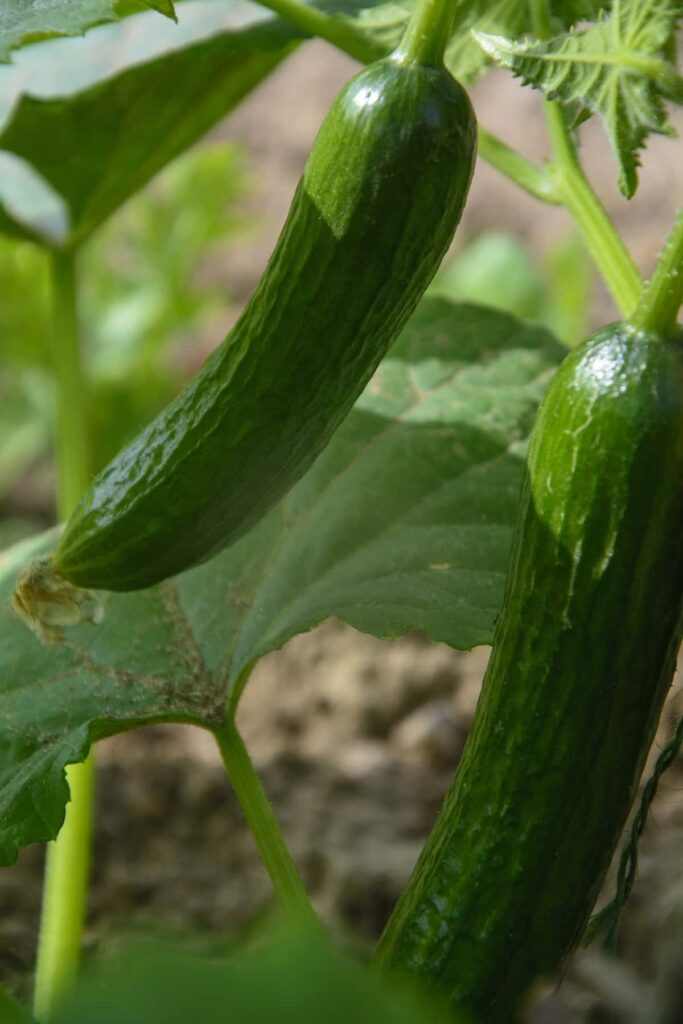Gardening in containers is a fantastic way to grow vegetables, especially if you don’t have a lot of space in your yard. Some vegetables that grow well in containers are tomatoes, potatoes, peppers, and eggplants. Some of the easiest vegetable varieties to grow in pots are fast-growing crops, such as peas and lettuce. Use an organic potting mix with good drainage when planting vegetables in a container. Several potting mixes specifically state that they are suitable for vegetable gardens.
Although container vegetable gardening is not foolproof, it reduces problems posed by weather and critters. Therefore, it is a good idea for beginners to grow vegetables in containers. In addition to being space-efficient, container gardening doesn’t require an in-ground garden patch. For example, a small balcony vegetable garden might include a few pots, hanging containers, or those that attach over railings.
18 Vegetables for container gardening
Vegetable types suitable for growing in containers
The size of the container you need for growing vegetables depends on what you are growing. The roots of some vegetables, such as leafy greens, are relatively shallow, so they do not require deep containers. However, some plants, such as potatoes, require deep soil to grow well. Planting vertical gardens with pots mounted on a fence or wall is one idea for container gardening. Use lightweight fabric pots to move them as needed. If you are looking for container vegetable garden ideas, here are some vegetables that thrive in containers on a porch, patio, or balcony if they receive adequate sunlight.
Tomatoes
Tomatoes can be grown in containers, as most people know. Among the most productive veggies, you can grow in pots, tomatoes are, without a doubt, the most effective. It would be best to choose a large enough container (at least 10 gallons) and ensure it is well watered. Providing tomatoes with a self-watering container that ensures consistent watering will make them grow quickly. When planting tomatoes, add a trellis and one plant per container.
A tomato plant can be either an indeterminate or a determinate plant. Since determinate varieties aren’t as large as determinate varieties, they are best for containers. Containers for Indeterminate plants can be huge, some reaching heights of 6 feet. The plants need full sunlight and well-drained, moist soil for better vegetative growth. The popular tomato dwarf varieties that are suitable for container gardening are:
- Cherry tomato
- Plum Yellow
- Window Box Roma
Smaller pots and containers are perfect for all of these varieties.
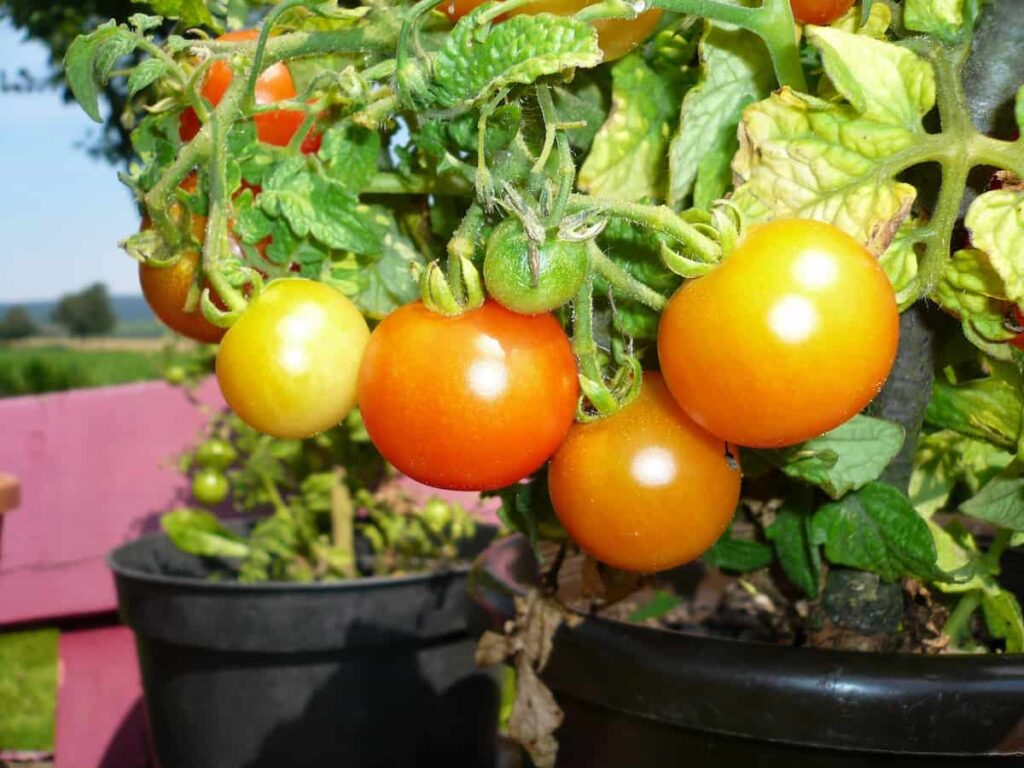
Beans
Growing beans in pots can be done in two ways. A bushy variety of beans will grow happily in pots without extra support, or you can grow climbing varieties and run pole beans up a trellis. Because they can be run up against walls and fences, this trellis makes the most of your vertical space. Beans are grown in various containers that vary in depth depending on what type of vegetable they are. Beans such as pole beans require 8 to 9 inches of soil, while bush beans only need 6 to 7 inches (15 to 18 cm.). Below are some bean varieties suitable for container gardening,
- Porch Pick
- Scarlet Runner
Carrots
Root crops like carrots grow well in containers. The container should be 10 to 12 inches deep and contain at least 3 gallons of soil. When carrots are two to three inches tall, plant the seeds and thin them three inches apart. It is important to remember that carrots need regular watering and moist soil when grown in containers. Dry soil causes roots to dry out and crack, which leads to a bad harvest. You’ll likely get a healthier plant if you actively water the pot. A deeper container is recommended if you wish to have longer plants.
Loose, loamy, sandy, well-draining soils with good drainage are best suited for these plants, which need full sunlight for proper growth. Shorter varieties like Chantaney, Oxheart, and Round carrots are best for container gardening. For example, Oxheart varieties mature with only 2 to 3 inches long roots. To avoid carrots with funny shapes, you should plant round carrots such as Parmex or Rondo.
Cucumber
Choose cucumber gherkin varieties when growing cucumbers in containers. As heavy feeders, cucumbers also require regular watering. You can grow them in a medium to a large pot, depending on their type, and in full sun. Make sure the soil doesn’t dry out. Make sure the soil is well nutrient-rich before planting by adding compost. These plants need full sunlight for better vegetative growth, and loamy and well-draining soils are best suited for it.
There are two types of cucumbers: vine-type and bush-type. Bush cucumbers are perfect for container gardening because of their short vines and sturdy structure. Look for seeds or plants whose names include the word bush. It will be possible to identify popular varieties with other names suitable for containers, such as Spacemaster.
In case you missed it: Growing Cucumber from Seed to Harvest: A Detailed Guide for Beginners
Eggplant
Eggplants like warm soil; if you grow them in containers, you can plant them earlier in the spring. For growing eggplant, stake the branches and place them in a medium-sized container that can hold up to 5 inches in depth. Despite their vulnerability to many garden pests, eggplants are relatively easy to grow.
Fertilize the pots once every two to three weeks and keep them in full sun. Choose compact varieties such as fairytale, bambino, hansel, or patio baby. Plants of this type will produce vegetables about 3 to 5 inches in length. By the end of the growing season, you can expect to harvest at least a dozen per plant.
In case you missed it: How to Grow Eggplant/Brinjal from Seed to Harvest: A Complete Guide for Beginners
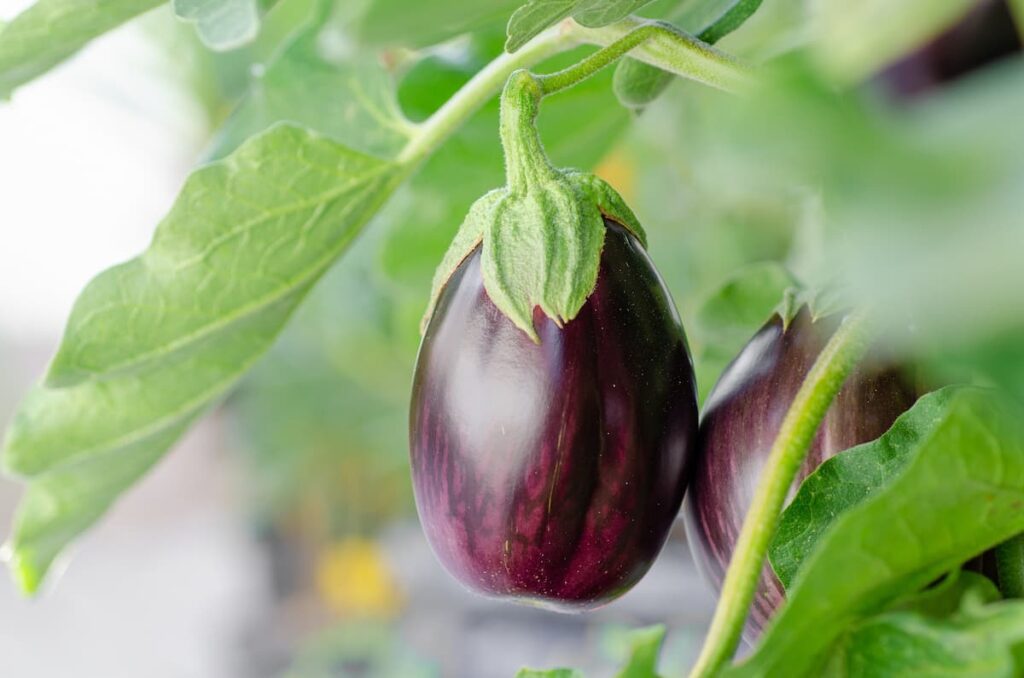
Pumpkins
It is also quite possible to grow pumpkins in containers. However, they require a minimum container size of 20-25 gallons. If you wish to grow large pumpkins, you might need a larger container. In addition to a large container, pumpkins are heavy feeders, so to ensure proper growth, you will need to fill the container with half compost.
You will also need to fertilize your plant every other week to get fruit from it and harvest it. A wide variety of excellent pumpkin varieties are available for growing. If you’re looking for edible pumpkins that can also serve as decorations, you might want to try some miniature pumpkins. These plants need full sunlight for better vegetative growth, and humus-rich well-draining soils are best suited for it.
Sweet Potatoes
When growing sweet potatoes in a container (at least 10 gallons), they will stay contained. It is because sweet potato vines grow large; let them grow and direct all their energy toward the growing potatoes. Sweet potatoes can also be harvested easily by dumping the containers into wheelbarrows after growing them in containers. Puerto Rico and Vardaman are likely varieties of sweet potato container crops. Ensure you don’t buy sweet potatoes from the grocery store because you have no idea what kind of sweet potato they are, what climate they are suited for, or whether they harbor any diseases.
Beetroot
Root crops are surprising on this list, but they do exceptionally well in containers because the soil does not need to be compacted. Beetroots are also great for container gardening because they can be grown in small spaces. You should select a container with a depth of 12 to 18 inches. The depth of your container is crucial because they need to be able to grow and develop freely. Make sure your containers receive six hours of direct sunlight a day. It is important to keep the pH level of your soil between 6.0 and 7.5. Adding wood ash will make your soil more acidic.
Potatoes
For small spaces, potatoes in containers are a great idea. You can cultivate them on your sunny patio or balcony in grow bags or wine barrels. It is best to plant three to four potatoes in a pot with a diameter of 12 inches. You must then keep giving it enough water so it will produce; make sure all the stems are completely covered in soil.
Early potatoes will be available within a few months, and the larger ones can be removed later. Chieftain, Dark Red Norland, Irish Cobbler, Sangre, Red Gold, and Yukon Gold are some early potato varieties that grow well in containers. It is also possible to grow fingerling potatoes in containers.
Radishes
One of the best root crops for containers is this one. Gardeners often overlook radishes, but they’re among the fastest-growing vegetables. Furthermore, they can be harvested in as little as 30 days, making them a great addition to children’s gardens. It is essential to ensure the soil is nice and fluffy for these root crops since they are root crops. For wider varieties, choose pots that are 8-10 inches deep. Radishes prefer deep containers at least six inches deep. The space between radish plants should be three inches.
Onions
Onions can be grown in containers or ground, but you need a good-sized pot at least 10 inches deep to accommodate the roots. Additionally, the pot should have a diameter of about eight inches. Choosing a pot three inches across for each onion you wish to grow is a good idea if you are planting multiple onions in the same pot. For instance, a five-gallon container can accommodate six to eight onion plants. Green onion is the most suitable for container gardening.
Garlic
It takes some planning and the right type of container to grow garlic in containers. Choose a pot 6 to 8 inches deep and as wide as possible when growing garlic in containers. The space between each clove should be 5 to 6 inches, and there must also be room for the roots to grow. When choosing your container, you should take this into account. Harvesting garlic planted in the fall takes place by June. In addition to saving space, growing produce near the kitchen makes it easier for the family cook to access the freshest ingredients.
Bitter Melon
This exotic and healthy edible is one of the best vegetables to grow in pots. As with squashes, cucumbers, and melons, it can be grown similarly. A pot with a depth of 16 inches and a width of 12 inches is required for bitter melon plants. A 5-gallon pot is a good option for growing bitter melons since it holds enough potting soil. Grow only one plant per pot, as too many plants, will compete for resources and overcrowd each other.
In case you missed it: How to Grow Bitter Gourd/Bitter Melon from Seed to Harvest: Check How this Guide Helps Beginners

Okra
Cooked and raw, okra flowers and leaves are edible. It is recommended that these plants be grown in five-gallon or larger containers whose depth should be between 10 and 12 inches. A minimum of 60 days of hot weather are required for okra to grow well. You may be able to start seeds indoors in cooler climates if you select short-season varieties.
It takes 50 to 65 days for this plant to mature and grows to a height and width of 2 to 3 feet. Peppers and eggplant are good companion plants for okra. Ideally, okra should be planted two weeks after the last spring frost and at least three months before the first fall frost.
In case you missed it: How to Plant Okra from Seeds: A Guide to Sowing to Harvesting
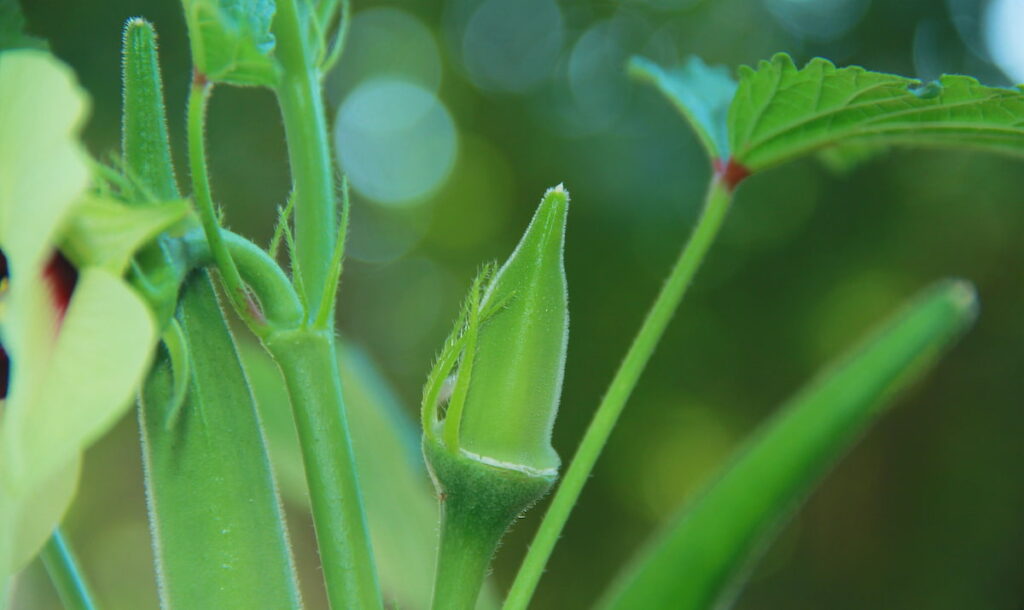
Kale
If you’re looking for a vegetable that does well in containers and has a lot of nutrients, Kale is a great choice. Greens like this are packed with nutrients and vitamins; they can be used in several ways. It is so prolific that you will need a pot 12 inches in diameter and 8 inches deep and well-draining, nutrient-dense potting soil.
Peas
Growing peas in containers and training them with a trellis or support system is possible. If you choose dwarf or bushy peas, you won’t have any problem growing them in pots. As a cool-season crop, peas must be planted in the spring when temperatures are not too hot or cold. It would be best to choose a container 6 to 8 inches wide. Giving your peas much attention or work to grow faster is unnecessary.
Regular watering is recommended to keep the soil slightly moist, frequent since they are a cool-season crop. Ideally, they should be planted where they will receive full sunlight. Something unique about growing peas is that you can plant them twice a year for an even more abundant harvest. For example, plant them in the early spring & in the fall again. In addition, they are ideal for succession planting.
Peppers
Peppers are another vegetable you can grow in pots. Growing peppers in containers increase their productivity and reduce cross-pollination between varieties. It is possible to grow hot and sweet peppers in containers, which do well in grow boxes. Peppers come in various colors, so you can choose one that suits your garden. It is recommended that pots have a minimum depth of 12 inches to grow optimally.
It is best to place the pots somewhere that receives six to eight hours of sunlight each day; ideally, the plants should receive eight to ten hours each day. The containers of peppers should have good drainage, and they should be watered consistently. However, the soil should not be overly wet; peppers dislike standing water. It is, therefore, advisable to move your pepper pots during stormy weather if you are growing them in containers.
In case you missed it: Growing Peppers from Seed to Harvest: For Bell Peppers, Chilli Peppers, Spicy/Hot Peppers, Sweet Peppers, and Jalapeno Peppers
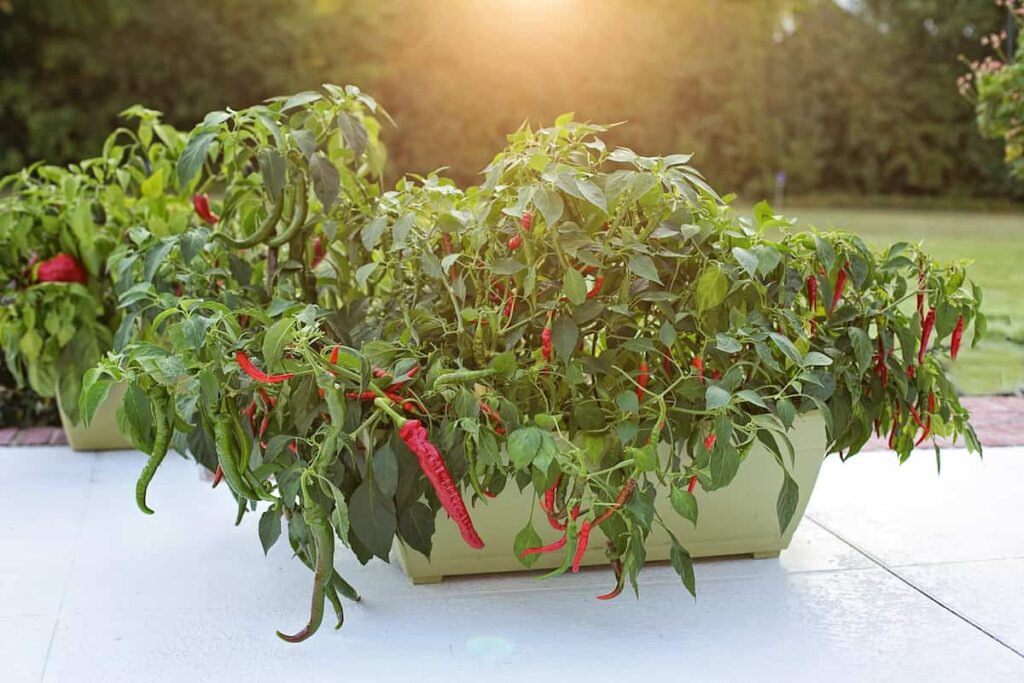
Cabbage
Growing cabbage in containers is easy if you don’t crowd them. Cabbage plants can grow as high as 4 feet (1.2 m) and as wide as nearly that much. So limit the number of plants per 5-gallon container (19 liters). The heads of your container-grown cabbage will be noticeably smaller, even if they are planted closer together. Stovehead, Blue Boy, Jersey Wakefield, Badger Ban, Head Blue, Ribbon Golden, Acre Flat, Dutch Rio Verde, and Green Boy are compact container varieties.
Tips for growing vegetable plants in containers
- A large plant requires a lot of space, and roots need space to grow. Do not use small containers because they can’t hold enough water for the entire summer.
- Growing more plants is also possible when your container is larger.
- Even a half-barrel of soil will yield a lot of food, so use anything that holds soil, like barrels, boxes, baskets, bathtubs, buckets, and troughs.
- Ensure that the container’s bottom can be completely drained.
- Plastic pots retain moisture more effectively and will not dry out as quickly as unglazed terra-cotta pots, but clay pots are usually much more attractive. It is, therefore, best to place a plastic pot inside a slightly larger clay pot to get the best.
- The watering of potted plants may need to be done as frequently as twice a day in some cases.
Conclusion
You can maximize your available space by gardening in containers. Additionally, container gardening gives you much more control over your growing process. You can have an ideal growing environment with the proper nutrients in your growing medium. In addition, your gardening chores will be streamlined, and you will have fewer weeds. There is also a great deal of cleanliness and ease involved in harvesting.
- Asparagus Seed Germination and Variety Selection
- Seasonal Flower Gardening: Best Practices for Spring, Summer, Fall, and Winter
- How to Grow Hibiscus from Flower
- Plantation Ideas for Home Decoration: A Beginners Guide
- Flower Garden Designs and Layouts for Beginners
- Planting and Spacing Techniques in Papaya: A Beginner’s Guide
- Growing Gold: Essential Techniques for Planting Pineapples
- How to Make Kalanchoe Plant Bushy: Home Remedies and Solutions
- 11 Reasons Why Your Gardenia is Not Blooming: Home Remedies and Solutions
- Eco Elegance: The Guide to Designing a Drought-Tolerant Landscape
- Gardening on a Slope: Strategies for Hillside Landscaping
- Nourish and Flourish: Top Organic Mulches for Thriving House Plants
- Everything You Want to Know about Indian Mogra Flower: Discover Uses and Growing
- Green Thumb Success: Expert Tips for Cultivating Greenhouse Pumpkins All Year Round
- Maximize Growth & Flavor: The Ultimate Guide to Companion Planting in Herb Gardens
- How to Control Rhododendron Problems Naturally: Home Remedies and Organic Ways to Fix Them
- Natural Magic: The Remarkable Benefits of Cinnamon for Plants
- Best Steps to Revive Dying Tulip with Natural and Organic Treatment
- 10 Reasons Why Your Angel Trumpet is Not Blooming: Remedies and Treatment
- How to Fix Periwinkle Leaf and Flower-Related Problems: Natural Remedies and Solutions
- How to Fix Zinnias Leaf and Flower Problems: Discover Natural and Home Remedies
- Organic Steps to Induce Lemon Tree Flowers: A Comprehensive Guide
- Bloom Booster: Crafting the Perfect Homemade Bougainvillea Fertilizer
- Optimizing Growth: A Guide to Applying NPK Fertilizer for Potted Plants
- 10 Best Homemade Fertilizers for Rubber Plant: DIY Recipes and Application Method
- How to Boost Female Pumpkin Flowers: Effective Steps for More Flowers and High Yields
- Transform Your Indoor Garden: Top Benefits of Pink Salt for Houseplants
- 10 Best Homemade Fertilizers for Peacock Plants (Calathea): Easy DIY Guide
- Unlock Blooms: 9 Reasons Why Your Potted Chrysanthemum is Not Blooming
- 8 Reasons Why Your Potted Hibiscus is Not Blooming: Fix it with Simple Solutions
- Unlock Blooms: 9 Key Reasons Your Potted Frangipani Won’t Flower
- 10 Reasons Why Is My Ice Plant Not Blooming: Remedies and Treatment
- 10 Reasons Why My Potted Hydrangea Not Blooming: Treatment and Remedies
- 10 Reasons Why is My Wisteria Not Blooming: Remedies and Treatment
- 10 Reasons Why is My Goldfish Plant Not Blooming: Remedies and Treatment
- Maximize Your Space: Ultimate Guide to Balcony Gardening with Grow Bags
